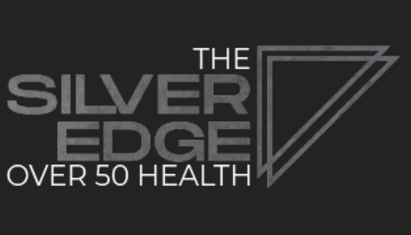
What’s better for burning fat – cardio or strength training? Everybody knows that cardio is the best way to lose weight and burn fat, right? Not so fast. Like many things in the exercise and nutrition universe, the answer is nuanced. But the prevailing notion of reduce calories and increase cardiovascular activity has been around for a long time… and has proven time and again to be a failure when it comes to long term weight loss. Now before we go any further in this discussion, let me clarify that you absolutely should do cardio. There are a multitude of health benefits from regularly doing cardiovascular exercises. But this prevailing notion that cardio is the best way to burn body fat is simply flawed.
And here’s why. When we consider how many calories we burn in an activity like jogging versus how many calories we burn when lifting weights – jogging wins. For example, we’d probably burn somewhere in the neighborhood for 350 calories on a 30 minute jog. Compare that to a measly 100 calories burned in 30 minutes of weightlifting. Based on that information alone the case is closed. Cardio is the clear winner. But here’s the problem with that equation – of all the benefits that exercise gives us, the least valuable thing in terms of long-term sustainable weight loss is the actual number of calories burned while we’re doing it. Your body is incredibly good at adapting to stress, and the more you do cardio, the more efficient your body becomes – primarily by paring muscle down and slowing your metabolism. And this is the exact opposite outcome those of us over 50 want. We want to hold on to as much muscle mass as possible, and we want our metabolism to speed up, not slow down.
Here’s a typical scenario. You find yourself 20 pounds overweight and you decide that’s it, you’re going on a diet and you’re gonna lace up the running shoes and get out for that 3 mile run three or four days a week. And at first you make great progress (at least as far as the scale is concerned). You lose those first six or seven pounds, and then you plateau. Well dang, back to the drawing board. You decide it’s time to get serious, so you cut even more calories and add even more cardio. Now you’ve lost another three or four pounds and then you plateau again, and you repeat the cycle. And lose another couple of pounds and plateau yet again. Now you’re in this very unhealthy and unsustainable position where you’ve severely restricted your calories, and you’re constantly running (or biking or aerobics, etc.). And what happens now is that your body is going into survival mode. Again, your body is amazingly adaptable and can adjust to almost anything, and now your brain is signaling your body to strip away any unnecessary muscle, store as much fat as possible, and to slow your metabolism to a crawl in order to preserve energy. And most likely you’re miserable at this point. By now you’re likely hungry most of the time, your hormones are out of whack, you aren’t sleeping as well, and eventually you give up. And then you slowly gain the weight back – maybe even a little extra to boot. And now you’re 25 pounds overweight and you decide to start the cycle all over again – you restrict calories and start back the cardio.
This unfortunate scenario is played out over and over again and wreaks metabolic havoc on your body – to say nothing about your emotional state. Now before we go any further, let’s sped a minute talking about muscle – specifically Type 1 and Type 2 muscle fibers. Type 1 muscles are known as slow twitch muscle fibers and are commonly used for endurance activities like walking, hiking, running, biking, swimming, etc. Type 2 muscle fibers on the other hand support quick powerful movements such as sprinting and weightlifting. Many of you are probably familiar with the term sarcopenia – which refers to age related muscle loss. And you may even have heard the statistic that we lose 3-5% of muscle mass every decade after age 30. Now most – if not all – of that age related muscle loss can be arrested by regular strength training as we age. But here’s the thing – we preferentially lose Type 2 muscle mass as we age. In other words, our bodies are pretty good at hanging on to Type 1 muscle fibers as we age. So by doing a ton of cardio (and ignoring strength training) we further signal the body to get rid of valuable Type 2 muscle. And Type 2 muscle is metabolically expensive. In other words, your body must rev up its metabolism to support this muscle. And we know that our bodies love efficiency, and if all we’re doing is cardio, our bodies will gladly get rid of that “expensive” muscle tissue… which is exactly what we do not want as aging adults. I had a fantastic conversation with Dr Gabrielle Lyon a few weeks back on this show, and she makes a case that muscle is the organ of longevity. If you haven’t already check out that episode, I strongly recommend you do. You can find it at www.silveredgefitness.com/episode72.

OK, back to the original question. What’s better for fast loss, cardio or strength training? We’ve shown that the actual activity of cardio burns more calories than the activity of strength training. But I want to make the case that the number of calories we burn while actually training is the least significant part of the fat loss equation. When we do strength training, we build valuable Type 2 muscle which directly speeds up your metabolism. So now let’s imagine that you’ve started a good strength program – and let’s just ignore the scale for now – and you start getting stronger, you start building muscle. And instead of restricting your calories you start making healthier food choices and prioritizing protein (which is a necessary component of growing new muscle).
Now instead of slowing down your metabolism the way we did when we cut calories and did constant cardio, we’re actually speeding up your metabolism. You’re now burning more calories, more fat, throughout the entire day – not just while you’re working out. So picture this – you’ve gotten stronger, you’ve reached your ideal weight, and now you’re actually eating more – not less – than when you started this weight loss journey. Now that’s a sustainable approach. Oh, and as an added bonus, you’re now stronger, healthier, more vital and more of a bad ass than you were before.
This is one of the biggest mistakes I see people over 50 making. The prevailing wisdom has been to cut calories and do cardio for weight loss for so long that it’s seldom questioned. But hopefully this discussion has given you enough information to make you pause and think about the healthiest way to reach your ideal body weight in a sustainable fashion.
